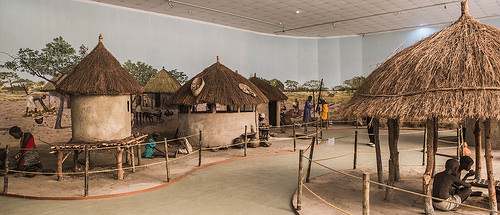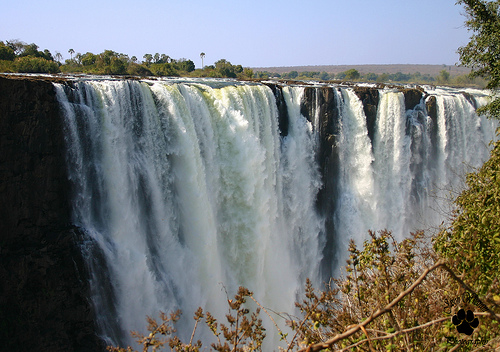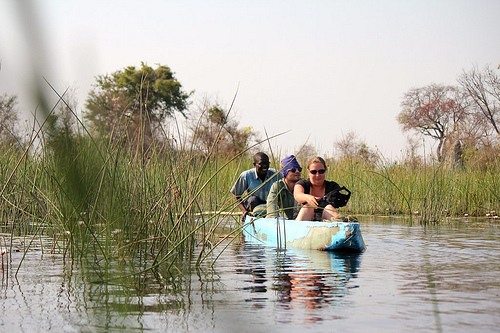East Africa: Zambia and Botswana
A glimpse into the authentic Africa, Zambia and Botswana promise vast expanses of open space, incredible landscapes and sights you will never forget.
An expedition travelling around the entire East Africa area over an eight week period, starting in Nairobi and finishing in Cape Town takes in Zambia and Botswana during weeks 5-6.
You can opt to join either for this fortnight, or continue from Tanzania and Zanzibar; everyone is welcome to join in this overland expedition to explore some of the most breath-taking places on the planet.
Lusaka
Described as the fastest growing town in Central Africa, Lusaka is the capital city of Zambia. Providing an authentic glimpse into the region, you can eat, drink and be merry amongst the locals without the need to stick to tourist traps.
Although there are shopping centres in Lusaka, the best places to visit are the markets. The ceramics and gemstones are two of the most sought after bargains and the handicrafts made by locals offer a unique buy. If you visit the city on a Sunday you will have a far greater choice of markets, with some particularly aimed at tourists with curios and other souvenirs. To see more of the markets that locals use, head to either the Town Centre or City Markets, but expect to have to fight the crowds!
If you want to find out more about the history of the country, the National Museum in Lusaka provides not just sculptures and paintings but a whole host of archaeological items, which ably highlight the cultural background of the region.

A scene from the National Museum in Lusaka, Zambia
An emerging city which is vibrant, busy and friendly, Lusaka is the perfect place to meet some locals and to learn more about the history of the country.
Victoria Falls
Perhaps one of the most famous sights in the whole of Africa, Victoria Falls is as impressive and breath-taking as you might expect.
The thunderous roar of the water as the Zambezi River plunges more than 100 metres down a gorge is quite simply deafening. The chasm is more than a mile wide and the waters send out a huge spray which jets out more than 500 metres, soaking observers standing too close. This airborne curtain of water can be seen for more than 30 miles, earning it the nickname of Mosi-oa-Tunya: Smoke That Thunders.
Although the Falls are on the border of Zambia and Zimbabwe, the best views are from the Zambian side, unless it’s during the dry season when you may have to enter Zimbabwe to see the Falls properly. If you can travel between March and May in the rainy season, the amount of water cascading down will be at its most spectacular.
The Falls are undoubtedly a mind-blowing sight but after adoring the power of the water for some time, you might feel like trying out some of the activities in the area. If you just want a gentle swim, a natural pool which collects near the upper edge of the Falls offers the chance for a tranquil dip against one of the most awe-inspiring backgrounds in the world.
To see the Falls from a bird’s eye view, you could take a micro light flight; this offers the opportunity to get some stunning photographs.

Victoria Falls, Zambia
Real adrenaline seekers could opt to do a bungee jump over the Falls, white water rafting or even a jet boat, which offers a hair-raising ride right to the ‘boiling pot’ located at the foot of the Falls.
Although there are many beautiful waterfalls in the world, you can never forget you are in Africa as amongst the stunning landscape you will see baboons and even warthogs strolling around in close vicinity to the tourist attraction.
Okavango Delta
A World Heritage Site, the Okavango Delta is an immense freshwater oasis lying in the centre of the arid Kalahari Desert.
A virtually untouched area of natural wetland, the Delta offers an opportunity to see a vast array of wildlife and escape from the overland truck for a few days.
Given protection by the Moremi Game reserve, the Delta is home to great numbers of wildlife you may have to search harder to see elsewhere in Africa. Attracted by the clean fresh water, there’s elephant, hippo, lion, buffalo, giraffe, zebra and antelope. The more elusive leopard can also be regularly seen in this area. In addition to these large mammals, there’s plenty of birdlife in the water, on the ground and in the skies above.
To take advantage of the sights on offer, it’s time to leave the truck behind and climb into a mokoro, a type of traditional dug-out canoe. Paddling down the Delta you will see elephants on the shoreline, trunks dipping in and out of the water, whilst hippos bathe alongside in the Okavango itself.

Exploring the Okavango Delta
It doesn’t matter if you’re not an expert in a boat, as the guides will help to teach you how to use the pole to move your mokoro along the waters, as well as how to catch a fish – but when it comes to the latter, be careful, it’s not as easy as they make it look! The good news is that it doesn’t matter if you can’t catch any fish, as your dinner will be provided. Phew!
Once you’ve finished canoeing for the day, it’s time for a different sort of paddle; a quick dip in the clear warm waters of the Delta before heading back to camp.
Staying near the Okavango Delta doesn’t just provide the opportunity to go canoeing; it’s also the perfect location to go on safari by foot. Accompanied by expert guides, you can set off through the plains to see the wildlife without the barrier of the truck. Seeing herds of elephant or giraffe gently grazing having trekked by foot to see them provides a great sense of accomplishment.
The final destination
Once the days in Okavango Delta are over, it’s time to move on to the final leg of the expedition: Namibia and South Africa , a trip that will take just over two more weeks. For those visitors returning home rather than travelling onward, Zambia and Botswana will always have a warm place in their heart, and may just be the inspiration to return once more to Africa in the future to make more special memories.
Image Credits: ninara, Jason Wharam and Ross Huggett